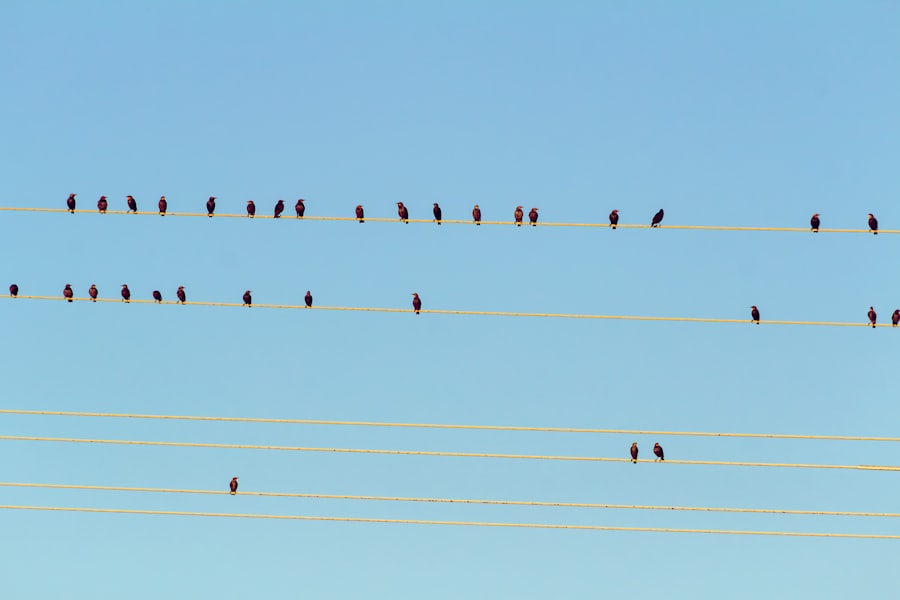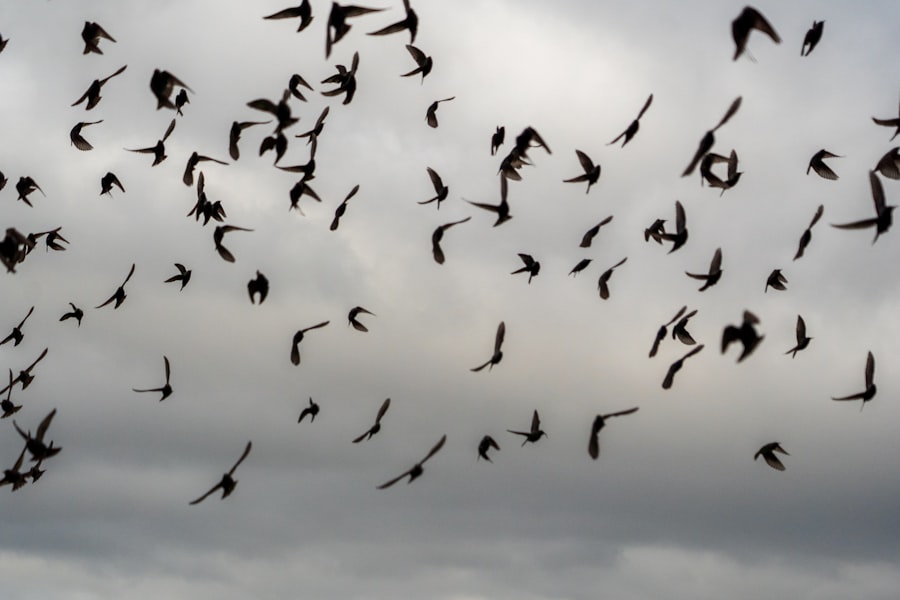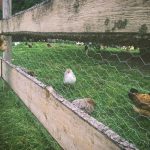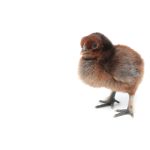Raising chickens and ducklings together is a viable option for poultry keepers. While these two species have distinct characteristics and requirements, they can successfully coexist in a shared environment with appropriate management. Chickens and ducklings have different housing needs, dietary preferences, and social behaviors.
To ensure their well-being, it is essential to provide suitable accommodations, proper nutrition, and attentive care. This article will discuss the key factors involved in keeping chickens and ducklings together, including housing design, feeding strategies, health considerations, and techniques for promoting positive interactions between the two species. By addressing these aspects, poultry keepers can create a harmonious living arrangement for their mixed flock of chickens and ducklings.
Table of Contents
- 1 Understanding the Differences Between Chickens and Ducklings
- 2 Coop and Enclosure Considerations for Both Chickens and Ducklings
- 3 Feeding and Nutrition for Chickens and Ducklings
- 4 Health and Wellness for Chickens and Ducklings
- 5 Managing Interactions and Social Dynamics Between Chickens and Ducklings
- 6 Tips for Successfully Raising Chickens and Ducklings Together
- 7 FAQs
- 7.1 Can chickens and ducklings be kept together?
- 7.2 What are the considerations for keeping chickens and ducklings together?
- 7.3 Do chickens and ducklings have different dietary needs?
- 7.4 Are there any health concerns when keeping chickens and ducklings together?
- 7.5 What are the benefits of keeping chickens and ducklings together?
- 7.6 How can I introduce chickens and ducklings to each other?
Key Takeaways
- Chickens and ducklings can be kept together, but it’s important to understand their differences and provide appropriate care for both species.
- Chickens and ducklings have different dietary and environmental needs, so it’s important to consider these when setting up their coop and enclosure.
- Providing a balanced diet with appropriate nutrition is crucial for the health and well-being of both chickens and ducklings.
- Regular health checks and proper hygiene practices are essential for keeping chickens and ducklings healthy and happy.
- Understanding and managing the social dynamics between chickens and ducklings is important for a harmonious flock.
Understanding the Differences Between Chickens and Ducklings
Behavioral Differences
Chickens are ground-dwelling birds that scratch and peck for food, whereas ducklings are more aquatic in nature and enjoy splashing in water. Chickens have a more hierarchical social structure with a pecking order, whereas ducklings are generally more social and less aggressive towards each other.
Dietary Requirements
Chickens have a more varied diet that includes grains, seeds, insects, and vegetation, whereas ducklings require a higher protein diet with access to water for swimming and foraging.
Physical Characteristics
Chickens have claws on their feet for scratching the ground, whereas ducklings have webbed feet for swimming. Chickens have a more streamlined body shape with a prominent breast, whereas ducklings have a rounder body shape with a flatter breast for buoyancy in water. These physical differences also impact their behavior and movement patterns, as chickens are more adept at walking and perching, whereas ducklings are better suited for swimming and floating.
By recognizing these distinctions, you can create an environment that caters to the specific needs of both chickens and ducklings.
Coop and Enclosure Considerations for Both Chickens and Ducklings

When keeping chickens and ducklings together, it’s important to provide a coop and enclosure that meets the needs of both species. The coop should have separate areas for nesting, roosting, and feeding to accommodate the different behaviors of chickens and ducklings. For example, chickens prefer elevated roosting spots, while ducklings require access to water for swimming and foraging.
Additionally, the coop should have adequate ventilation and insulation to maintain a comfortable environment for both chickens and ducklings throughout the year. The outdoor enclosure should include both dry land areas for chickens to scratch and peck, as well as a water source for ducklings to swim and forage. It’s essential to provide a shallow pool or pond for ducklings to engage in their natural behaviors, such as dabbling and splashing.
The enclosure should also be predator-proof to ensure the safety of both chickens and ducklings. By creating a well-designed coop and enclosure that caters to the specific needs of both species, you can promote a harmonious living environment for chickens and ducklings. In addition to the physical layout of the coop and enclosure, it’s important to consider the bedding material used.
Chickens prefer dry bedding such as straw or wood shavings, while ducklings require access to water for swimming and cleaning themselves. Providing appropriate bedding materials that cater to the needs of both chickens and ducklings is essential for maintaining a clean and hygienic living environment.
Feeding and Nutrition for Chickens and Ducklings
Feeding and nutrition are crucial aspects of keeping chickens and ducklings together. While both species can consume a similar diet consisting of grains, seeds, and insects, ducklings require a higher protein content in their feed compared to chickens. It’s important to provide a balanced diet that meets the specific nutritional requirements of both chickens and ducklings.
This may involve offering separate feeders for each species to ensure that they have access to the appropriate feed without competition or overconsumption. In addition to commercial poultry feed, it’s beneficial to supplement their diet with fresh fruits, vegetables, and protein sources such as mealworms or fish for ducklings. Providing access to grit for chickens and crushed oyster shells for both chickens and ducklings is essential for proper digestion and calcium absorption.
By carefully managing their feeding regimen and ensuring that they receive a balanced diet, you can promote optimal health and well-being for both chickens and ducklings. Water is also an essential component of their diet, especially for ducklings. They require access to clean water for drinking, swimming, and cleaning themselves.
It’s important to provide shallow water sources in the outdoor enclosure to accommodate the natural behaviors of ducklings. By paying attention to their feeding and hydration needs, you can support the overall health and vitality of both chickens and ducklings.
Health and Wellness for Chickens and Ducklings
Maintaining the health and wellness of chickens and ducklings is paramount when raising them together. Regular health checks should be conducted to monitor their overall condition, including body weight, feather quality, and behavior. It’s important to be vigilant for any signs of illness or injury in both species and seek veterinary care if necessary.
Additionally, providing a clean living environment with proper ventilation, bedding, and sanitation practices is essential for preventing disease outbreaks and promoting good health. Parasite control is another important aspect of maintaining the health of chickens and ducklings. Both species are susceptible to external parasites such as mites and lice, as well as internal parasites such as worms.
Regular inspections and appropriate treatment measures should be implemented to prevent parasite infestations and minimize their impact on the well-being of both chickens and ducklings. Vaccinations are also an important consideration for poultry health management. While there are specific vaccines available for chickens against common diseases such as Marek’s disease or Newcastle disease, there are fewer options for ducklings.
It’s important to consult with a poultry veterinarian to develop a vaccination plan that meets the specific needs of both chickens and ducklings based on their age, breed, and potential exposure risks.

Chickens have a hierarchical social structure with a pecking order, whereas ducklings are generally more social and less aggressive towards each other. It’s essential to closely observe their interactions to ensure that there is no bullying or aggression between individual birds.
Environmental Factors
Providing adequate space within the coop and outdoor enclosure can help minimize conflicts between chickens and ducklings. This includes offering multiple feeding stations, roosting spots, and water sources to prevent competition or overcrowding. Additionally, providing enrichment activities such as perches or hiding spots can help alleviate boredom and reduce stress among both species.
Introducing New Birds
Introducing new birds into the flock should be done gradually to minimize stress and potential conflicts. It’s important to monitor their interactions closely during the integration process to ensure that they are able to coexist peacefully. By understanding their social dynamics and providing a well-managed living environment, you can promote positive interactions between chickens and ducklings.
Tips for Successfully Raising Chickens and Ducklings Together
Successfully raising chickens and ducklings together requires careful planning, management, and attention to their specific needs. Here are some tips to help you create a harmonious living environment for both species: 1. Provide separate areas within the coop for nesting, roosting, feeding, and swimming to accommodate the different behaviors of chickens and ducklings.
2.
Ensure that the outdoor enclosure includes dry land areas for scratching and pecking, as well as a shallow pool or pond for swimming and foraging.
3. Offer a balanced diet that meets the specific nutritional requirements of both chickens and ducklings, including access to clean water at all times.
4. Conduct regular health checks to monitor their overall condition, including body weight, feather quality, behavior, parasite control measures.
5.
Observe their interactions closely to ensure that there is no bullying or aggression between individual birds.
6. Introduce new birds into the flock gradually to minimize stress and potential conflicts.
7. Consult with a poultry veterinarian to develop a vaccination plan that meets the specific needs of both chickens and ducklings based on their age, breed, potential exposure risks.
By following these tips and implementing appropriate management practices, you can successfully raise chickens and ducklings together in a shared living environment. With proper care, attention to their specific needs, you can create a harmonious cohabitation between these two species of poultry.
If you’re considering keeping chickens and ducklings together, it’s important to understand the unique needs of both species. One important factor to consider is the mating season for ducks, which can impact the dynamics of your flock. For more information on duck mating season, check out this article on Poultry Wizard. Understanding the behavior and needs of both chickens and ducks will help you create a harmonious and healthy environment for your feathered friends.
FAQs
Can chickens and ducklings be kept together?
Yes, chickens and ducklings can be kept together in the same coop and run as long as certain considerations are taken into account.
What are the considerations for keeping chickens and ducklings together?
It is important to provide enough space for both chickens and ducklings to roam and forage. Additionally, ensuring that the coop and run are kept clean and dry is crucial for the health of both species.
Do chickens and ducklings have different dietary needs?
Yes, chickens and ducklings have different dietary needs. While chickens primarily eat grains and seeds, ducklings require a diet higher in protein and may also need access to water for swimming and foraging.
Are there any health concerns when keeping chickens and ducklings together?
One potential health concern is that ducklings can carry certain diseases that are harmless to them but can be harmful to chickens. It is important to monitor the health of both species and seek veterinary care if any issues arise.
What are the benefits of keeping chickens and ducklings together?
Keeping chickens and ducklings together can provide companionship for both species and can also help with pest control as ducks are known for eating insects and slugs.
How can I introduce chickens and ducklings to each other?
Introducing chickens and ducklings to each other should be done gradually and in a controlled manner. Allowing them to see and hear each other before introducing them in a shared space can help reduce stress and potential conflicts.
Meet Walter, the feathered-friend fanatic of Florida! Nestled in the sunshine state, Walter struts through life with his feathered companions, clucking his way to happiness. With a coop that’s fancier than a five-star hotel, he’s the Don Juan of the chicken world. When he’s not teaching his hens to do the cha-cha, you’ll find him in a heated debate with his prized rooster, Sir Clucks-a-Lot. Walter’s poultry passion is no yolk; he’s the sunny-side-up guy you never knew you needed in your flock of friends!







